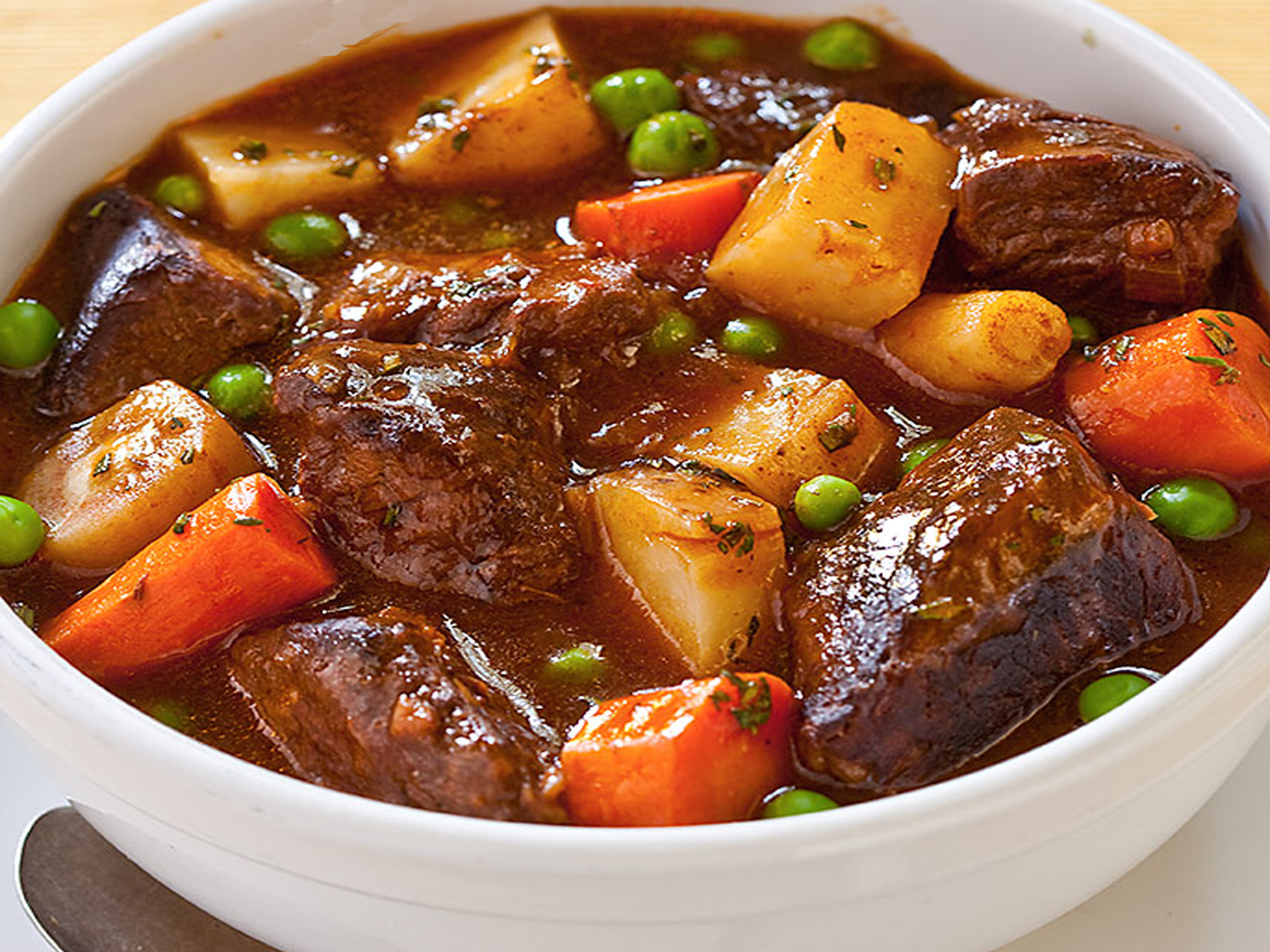Video tentang The Humble Hero: A Deep Dive into the Art of Beef Stew
The Humble Hero: A Deep Dive into the Art of Beef Stew

Beef stew. The very name conjures images of warmth, comfort, and hearty sustenance. It’s a dish that transcends cultures, adapting to regional flavors and ingredients while retaining its core identity: a rich, flavorful broth brimming with tender beef and an array of vegetables. More than just a meal, beef stew is a testament to the power of slow cooking, a celebration of simple ingredients transformed into something truly extraordinary. This article will explore the multifaceted world of beef stew, delving into its history, variations, techniques, and the secrets to creating a truly unforgettable bowl.
A History Steeped in Tradition:
The origins of beef stew are as murky as the broth itself, lost in the mists of culinary history. However, the concept of slow-cooked meat and vegetables is ancient, predating written recipes by centuries. Early forms likely involved simple techniques: meat, vegetables, and water simmered over a low fire for hours, a practical method for tenderizing tougher cuts and maximizing flavor. The development of cast iron pots and later pressure cookers revolutionized the process, allowing for faster cooking times while retaining the characteristic tenderness.
Different cultures have embraced their own versions of beef stew, each reflecting local ingredients and culinary traditions. In France, boeuf bourguignon showcases the richness of Burgundy wine and the earthy flavors of mushrooms. Ireland boasts its hearty Irish stew, often featuring lamb or mutton alongside potatoes and root vegetables. Across the globe, variations abound, from the spicy stews of Southeast Asia to the subtly spiced versions of the American West. This adaptability is a testament to the dish’s inherent versatility.
The Building Blocks of a Great Beef Stew:
The key to a truly exceptional beef stew lies in understanding the fundamental elements:
-
The Beef: Choosing the right cut is paramount. Tougher cuts, such as chuck roast, brisket, or short ribs, are ideal, as they benefit from the long, slow cooking process, becoming incredibly tender and flavorful. Leaner cuts, while faster cooking, will lack the rich texture and depth of flavor that characterize a classic stew. Consider cutting the beef into roughly 1-2 inch cubes for even cooking.
-
The Broth: The foundation of any good stew is its broth. While water can be used, a richer broth significantly enhances the overall flavor. Beef broth, vegetable broth, or a combination of both, forms a delicious base. Adding wine, such as red wine for a beef bourguignon or white wine for a lighter stew, adds another layer of complexity. Consider using homemade broth for an even more intense flavor.
-
The Vegetables: The choice of vegetables is largely a matter of personal preference and seasonal availability. Classic choices include carrots, potatoes, onions, celery, and parsnips. Other vegetables, such as mushrooms, turnips, leeks, or even peas and green beans, can be incorporated to add variety and texture. The key is to choose vegetables that hold their shape well during the long cooking process.

-
The Aromatics: Aromatic herbs and spices are crucial for building depth of flavor. Bay leaves, thyme, rosemary, and parsley are common choices, adding earthy and herbaceous notes. Garlic and onions provide a savory base, while a pinch of black pepper adds warmth. Experiment with other spices, such as paprika, cumin, or coriander, to create unique flavor profiles.

The Thickening Agent: Some stews rely on the natural thickening provided by the vegetables and meat, while others benefit from the addition of a thickening agent. Flour, cornstarch, or a roux (a mixture of butter and flour) can be used to create a richer, more substantial stew. Be careful not to add too much, as this can result in a gummy texture.

Mastering the Technique: A Step-by-Step Guide:
While recipes vary, the basic process for making beef stew remains consistent:
-
Sear the Beef: Begin by searing the beef cubes in a large pot or Dutch oven over medium-high heat. This step creates a flavorful crust and adds depth to the final dish. Work in batches to avoid overcrowding the pot, ensuring each cube receives a good sear.
-
Sauté the Aromatics: Once the beef is seared, remove it from the pot and add the chopped onions, carrots, and celery. Sauté until softened, about 5-7 minutes, allowing the vegetables to release their sweetness. Add garlic during the last minute of cooking.
-
Deglaze the Pot: Pour in a cup of red wine or broth to deglaze the pot, scraping up any browned bits from the bottom. This step incorporates the delicious fond (the browned bits) into the stew, adding significant flavor.
-
Combine and Simmer: Return the seared beef to the pot. Add the remaining broth, herbs, spices, and any other vegetables. Bring the mixture to a simmer, then reduce the heat to low, cover, and cook for at least 2-3 hours, or until the beef is incredibly tender. The longer it simmers, the more flavorful the stew will become. Consider using a slow cooker for an even more tender result.
-
Thicken (if necessary): If desired, thicken the stew during the last 30 minutes of cooking. Mix the thickening agent (flour, cornstarch, or roux) with a small amount of cold water to create a slurry, then whisk it into the simmering stew. Cook until the stew reaches the desired consistency.
-
Season and Serve: Taste the stew and adjust the seasoning as needed, adding salt, pepper, or other spices to your liking. Serve hot, garnished with fresh herbs, a dollop of sour cream or crème fraîche, or crusty bread for dipping.
Beyond the Basics: Exploring Variations:
The beauty of beef stew lies in its adaptability. Experiment with different ingredients and techniques to create your own signature version:
-
Spicy Beef Stew: Add chili powder, cayenne pepper, or a few chopped jalapeños for a spicy kick.
-
Beef Stew with Mushrooms: Enhance the earthy flavors with a generous amount of mushrooms, such as cremini, shiitake, or oyster mushrooms.
-
Beef Bourguignon: Embrace the classic French technique, incorporating Burgundy wine, pearl onions, bacon, and lardons.
-
Irish Stew: Use lamb or mutton instead of beef, and incorporate potatoes and root vegetables for a hearty Irish twist.
-
Beef Stew with Barley or Potatoes: Add barley or other grains for added texture and heartiness.
Conclusion: A Comforting Classic for Generations to Come
Beef stew is more than just a meal; it’s a culinary journey, a testament to the transformative power of slow cooking and the magic of simple ingredients. From its humble beginnings to its countless variations, beef stew continues to hold a special place in kitchens across the globe. Its enduring appeal lies in its comforting warmth, its satisfying texture, and its ability to bring people together around a shared table. So, gather your ingredients, embrace the process, and create your own masterpiece – a bowl of beef stew that will warm your heart and nourish your soul. The possibilities are as endless as your imagination, making this classic dish a timeless culinary adventure waiting to be explored.

Penutup
Therefore, we hope this article has provided valuable insights on The Humble Hero: A Deep Dive into the Art of Beef Stew. We hope you found this article informative and helpful. See you in our next article!

